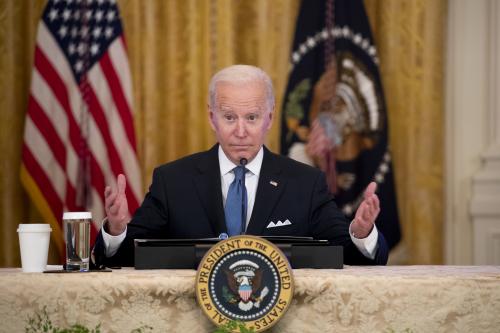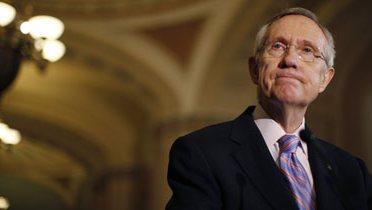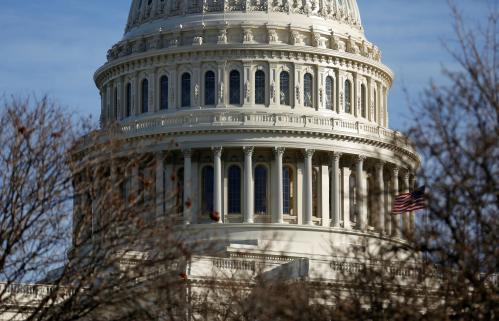In our polarized political environment, the filibuster’s demise for the Supreme Court is not surprising. Although Democrats may smart in the short run, they will eventually appreciate its end. All of us, no matter partisan affiliation, may benefit if both parties then choose less conventional nominees.
The Democrats’ decision to end debate by majority vote for lower court nominations in November 2013 seemed sensible. It had become difficult to staff the federal bench. As a university professor who studies presidential appointments to agencies and courts, I believe both parties contributed significantly to the mess.
Confirmation rates and totals have worsened in recent decades. Using information on all submitted judicial nominations to Article III courts from congress.gov, I created a database covering the period from the start of President Reagan’s administration to the end of President Obama’s. While 95 and 88 percent of President Reagan’s district court and appellate court nominees, respectively, secured confirmation, no president since has matched his record. On district courts, Presidents George H.W. Bush, Clinton, George W. Bush, and Obama saw rates of 77, 87, 91, and 83 percent, respectively. Appellate courts were harder to staff than district courts for all the two-term Presidents. Confirmation rates were 72, 72, and 81 percent for Presidents Clinton, Bush, and Obama, respectively. President George H.W. Bush had 79 percent of his appellate court nominees confirmed. (The rates for President Obama include three years where only a majority of the Senate was needed to force a vote. I address that below).
These confirmation rates, which look at the percentage of successful nominees under a specific president, tell only part of the depressing story. Multiple nominations for the same person—usually, where the first submission is returned to the president and the second in the next calendar year is confirmed—were infrequent until the past two administrations. Over 92 percent of both district court nominations by Presidents Reagan, George H.W. Bush, and Clinton and appellate court nominations by the first two Presidents represented first-time submissions for the specific court by each White House. That figure dropped to 56 and 69 percent for the courts of appeal, and to 80 and 73 percent for the district courts, for Presidents George W. Bush and Obama, respectively. (Of President Clinton’s appellate nominations, 78 percent were his first for those nominees).
If you cannot effectively take on new clients while your nominations linger for several years, would you jump to be nominated? It is no surprise that recent presidents drew substantial nominees from the federal bench itself—choosing district court judges from magistrate judges and appellate court judges from district court judges—as well as from state courts, government, and large firms. That narrows the forms of experience of the federal bench. Where are the lawyers toiling in small-firm practice or attorneys representing criminal defendants?
Sheer numbers (excluding recess appointments) also tell a mostly downward story. Only President Clinton placed more district court judges on the bench (305) than President Reagan (290), even though President Obama nominated the most unique individuals for the trial bench. There has been a steady decline of appellate court judges by two-term Presidents—from 83 under the former California governor to 55 under President Obama. Of the two-term Presidents, President Reagan nominated the most lawyers, and President Obama nominated the fewest, for the courts of appeals.
Democrats should not rue their decision in 2013 to end the mandate for 60 votes to close off debate for lower court nominations, although it seemingly brought substantial costs once they lost political power in Congress. For the one year the Democrats controlled the White House and the Senate—and could end debate with a simple majority—it was much easier to appoint new judges. Under half of the district court nominations (45 percent) submitted in 2013 before the change were confirmed (and 1/6 of those confirmations occurred after the voting rule was modified). By contrast, 87 percent sent in 2014 made it through. While only 60 percent of appellate nominations succeeded in 2013 (and 1/6 of these confirmations as well happened in December), 85 percent of the next year’s picks were confirmed.
Lowering the number of votes should also make it easier for the president’s nominees to succeed when the opposite party controls the Senate, all else being equal. But President Obama’s judicial nominations to each set of courts in the last Congress (a two-year period) fared worse than similarly timed nominations by his predecessors (and this is putting aside Judge Garland’s nomination). We live in much more polarized times.
Going forward, our system for staffing the federal bench is likely to have smooth and rough patches, corresponding to party control. For at least the next 20 months, Republicans will benefit from the November 2013 rule change to fill federal district and appellate courts. Although there are differences among the courts and far fewer openings, the pattern should hold for the Supreme Court as well, now that Republicans made a similar change for the highest court last week. At some point, Democrats will have their chance. The blue slip practice, if it continues, will provide some moderation for the lower courts.
If future party division mimics the last four decades, the same party will control the White House and the Senate a little over half the time. In those windows, potential nominees may stay on the phone longer when the White House calls. And maybe those calls will go to a more diverse set of candidates on both sides.







Commentary
The end of the filibuster paves the way for more diverse courts
April 13, 2017